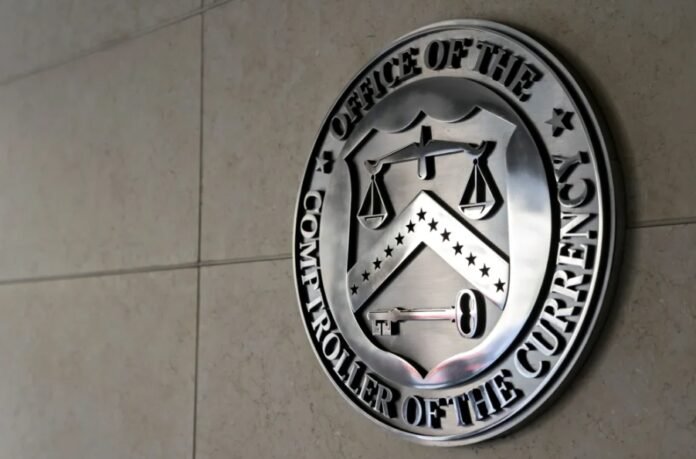As the spotlight shone brightly on the first-ever White House Crypto Summit, an equally pivotal development was unfolding behind the scenes. While policymakers, regulators, and industry leaders gathered to discuss the future of digital assets, the Office of the Comptroller of the Currency (OCC), the U.S. Treasury Department’s key banking regulator, quietly made a significant move. In an understated yet groundbreaking shift, the OCC issued an interpretive letter that opens the door for banks to engage with digital assets in a more direct and substantive way.
The OCC’s announcement, though not as widely heralded as the summit, marks a historic moment for the future of digital banking. It signals that the regulatory environment surrounding cryptocurrencies, stablecoins, and other digital assets is maturing—especially as institutions, from banks to fintech companies, look to incorporate these emerging technologies into their services. The implications are profound, not just for banks, but also for the broader financial system and the growing ecosystem of digital finance.
The OCC’s Quiet Revolution
The interpretive letter issued by the OCC has potentially wide-reaching consequences for how banks will be able to interact with digital assets moving forward. Historically, banks have been cautious about stepping into the realm of cryptocurrencies and digital currencies due to the lack of clear regulatory guidance. While some banks have offered limited services in the digital asset space, they have often been wary of running afoul of existing regulations, which were largely drafted before the rise of blockchain technology and decentralized finance.
With the OCC’s new position, however, banks now have clearer parameters for how they can participate in the digital assets market. The letter indicates that national banks are permitted to offer custodial services for cryptocurrencies and other digital assets. This could open the door for institutions to take on a more proactive role, providing a range of services such as holding and securing clients’ crypto holdings and facilitating transactions within the increasingly popular world of digital finance.
Additionally, the OCC’s letter clarifies that banks can engage in activities related to stablecoins—a type of digital currency that is typically pegged to a reserve asset like the U.S. dollar—by allowing them to participate in payment systems that support stablecoin transactions. For many, this represents a crucial step in integrating blockchain-based assets into the traditional financial infrastructure.
Why Now? The Timing Behind the OCC’s Decision
The timing of the OCC’s interpretive letter is significant for several reasons. The White House Crypto Summit, held just days before the announcement, was designed to address the rapidly evolving digital asset landscape, calling attention to the need for comprehensive regulatory frameworks. With the summit pushing for a clearer vision of how digital assets should be governed, the OCC’s decision demonstrates that the U.S. government is starting to take a more progressive stance on the role of digital assets within the existing financial system.
It also comes amid increasing interest from traditional financial institutions in digital assets. As cryptocurrencies, stablecoins, and decentralized finance continue to gain traction, financial institutions are looking for ways to incorporate these technologies into their offerings. Some major players, such as JPMorgan and Goldman Sachs, have already made strides into crypto-related services, and the OCC’s move provides additional clarity for banks contemplating similar steps.
Moreover, the rise of fintech companies and the increasing competition from non-traditional financial services has also put pressure on legacy institutions to innovate. In this context, allowing banks to hold digital assets and participate in the crypto ecosystem could serve as a competitive advantage, enabling them to offer services that meet the demand for cryptocurrency-related products.
What Does This Mean for the Future of Banks and Digital Assets?
The OCC’s interpretive letter fundamentally alters the relationship between traditional banking and the world of digital assets. Banks, which have long been reluctant to embrace cryptocurrencies due to concerns over regulation and risk, are now provided with a clearer, more structured pathway to engage with digital currencies. As more banks take advantage of this new guidance, it is expected that digital asset services will become more integrated into mainstream banking operations.
For one, the move could pave the way for larger institutional investments in cryptocurrencies. Many banks, particularly smaller regional ones, have been cautious about offering services related to crypto assets because of the perceived risk and regulatory uncertainty. The OCC’s new policy gives banks the regulatory backing they need to take a more proactive approach to digital assets without fearing legal ramifications.
In addition to offering custodial services and engaging with stablecoins, banks could potentially broaden their involvement by launching products that bridge the gap between traditional and digital finance. These might include crypto-backed loans, stablecoin-based savings accounts, or even blockchain-based payment systems, allowing banks to stay competitive in a rapidly changing financial environment.
For consumers, this move could also signal a shift toward more widespread acceptance of cryptocurrencies as a legitimate form of financial asset. If banks are authorized to handle digital assets and offer new products, it will likely provide more safety and security for everyday users. One of the key issues that have hampered consumer trust in digital assets has been concerns over their safety, given the unregulated and often volatile nature of cryptocurrencies. With traditional financial institutions involved, these concerns may begin to subside.
The Road Ahead: Challenges and Considerations
Despite the OCC’s forward-looking stance, several challenges remain. Regulatory oversight of digital assets is still in its infancy, and the rules for how banks will be able to interact with crypto assets are far from fully fleshed out. For instance, while the OCC has provided guidance on custodial services and stablecoin transactions, it hasn’t yet offered a clear framework for dealing with decentralized finance (DeFi) or more complex blockchain-based applications.
Moreover, the volatility of cryptocurrencies remains a concern. Banks that choose to offer crypto-related products will need to carefully navigate risks related to price swings, security breaches, and consumer protection. To address these issues, banks will likely need to invest in new technologies and compliance structures to mitigate the risks that come with dealing in digital currencies.
Another important consideration is the need for cooperation between different regulatory bodies. While the OCC’s letter provides significant clarity, it is just one piece of the regulatory puzzle. Other agencies, such as the U.S. Securities and Exchange Commission (SEC) and the Commodity Futures Trading Commission (CFTC), will need to play a role in developing rules that provide a comprehensive regulatory framework for digital assets. Furthermore, any global regulatory considerations, particularly with other countries’ efforts to regulate cryptocurrencies, will need to be addressed to ensure a cohesive system.
Conclusion
The OCC’s recent interpretive letter represents a landmark moment for the banking industry and the digital asset space. By giving banks clearer guidance on how to engage with digital assets, the regulator has set the stage for a new chapter in the evolution of financial services. While this decision doesn’t immediately resolve all regulatory questions surrounding digital assets, it marks a significant step toward integrating these technologies into the traditional financial system.
For banks, the move offers new opportunities to innovate and stay competitive in a rapidly evolving financial landscape. For consumers, it could mean greater access to secure, regulated crypto-related products. As the regulatory environment continues to develop, it will be fascinating to see how this decision shapes the future of banking and digital finance in the years to come.




